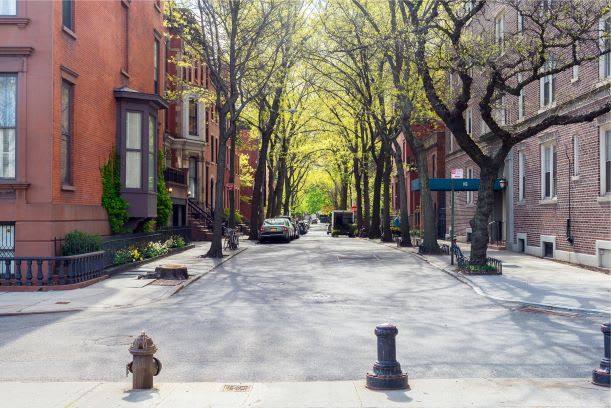Mortgage Rates Likely to Keep Falling on Coronavirus, Fed
The Fed stunned the market in March 2020, when it cut the benchmark interest rate by half a point from 1.75% to 1.25% over concerns about the impact of the coronavirus outbreak on the U.S. economy. This was the Fed’s first emergency unscheduled rate decision since the 2008 financial crisis. Since then, the Fed cut the benchmark interest rate further to just 0.25%.
The average 30-year fixed-rate mortgage dropped below 3.00% in August 2020 - the lowest since government-sponsored mortgage corporation Freddie Mac began surveying lenders in 1971. Mortgage rates have been falling steadily since late 2018, when the Fed’s target rate stood at 2.50%.
On September 4th 2020, Federal Reserve Chairman Jerome Powell said that interest rates are expected to stay low for the coming years - “However long it takes, we’re going to be there. We’re not going to prematurely withdraw the support that we think the economy needs.”
The Fed’s target interest rate is one of two major benchmarks mortgage lenders look to when setting rates. The reason mortgage rates are lower now than in 2008 is because the 10-year Treasury bond yield – the other benchmark used by mortgage lenders – have also been falling dramatically over coronavirus fears. The 10-year Treasury fell below 1% for the first time ever following the Fed’s March 2020 emergency rate cut.
In short, the COVID-19 outbreak may be bad for people and the economy – but it is good from purely a borrowing perspective.
Compare our Top Lenders
Is Now a Good Time for a Purchase Home Loan?
Based on the current trend, it may be worth waiting a little while longer before purchasing. That’s because interest rates are falling faster than home prices are rising.If you’re in the market for a new home, it’s worth asking yourself two questions:
- Am I willing to wait to see if mortgage rates go down from current levels (and accept the risk that rates could stay even or go up)?
If, as is likely, mortgage rates keep falling, to what extent might the benefits be offset by rising house prices?
The answer to the first question depends how much you feel comfortable with risk. It appears likely mortgage rates will keep falling in the near-term. However, they are already lower than at any time in history, so you may be content just getting a mortgage at current prices.
As for the second question, there are never any certainties about where mortgage rates and house prices will go. However, it’s still helpful to understand how you would be personally impacted if the trend of falling mortgage rates and rising house prices continues.
This example shows how the average home buyer would have fared in January 2020 compared to one year earlier. From January 2019 to January 2020, the median U.S. home value rose 3.8% and the average 30-year fixed mortgage rate fell 21.3%. A person buying a house at the median national price in January 2020 would have paid around $9,000 more for their home than 12 months earlier. However, they would have reduced their future interest payment liabilities by $32,730, resulting in a net gain of $23,730.
Is Now a Good Time to Refinance an Existing Mortgage?
If you’re thinking about refinancing, then house prices are irrelevant; the only thing that really matters is where mortgage rates are headed. According to Black Knight, a company that collects data on the mortgage industry, the number of American refinance candidates (defined as people with 720+ credit scores and at least 20% home equity who could cut their current interest rate by at least 0.75% with a refi) exploded from fewer than 8 million in mid-January 2020 to approximately 14 million at the start of March 2020.
How to Secure the Best Mortgage APR as Rates Fall
Here are a few ways for home buyers to take advantage of falling mortgage rates.
Lock in a rate. Searching for a house and a mortgage at the same time can be a stressful experience. If you need more time to find the right house, some lenders let their customers lock in a pre-approved rate for up to 90 to 120 days.
Take an ARM. Adjustable-rate mortgages offer lower interest rates than fixed-rate mortgages for the first three to 10 years. If mortgage rates are the same or lower at the end of the introductory period, you’re in luck. And even if they end up going higher in that time, an ARM may be the best option if you believe you can pay the mortgage off early.
Shop around. With any lending product, the golden rule is to shop around. Comparing 3-5 lenders is a great way of seeing what’s available right now and what type of rate you can qualify for with your credit profile.
Our Recommended Lenders
AmeriSave Mortgage
AmeriSave Mortgage Corporation is a full-service mortgage lender operating in 49 states and DC. Established in Atlanta in 2002, it has funded 220,000+ homes for a total value of more than $55 billion. AmeriSave is known for offering streamlined online applications with the option of contacting customer support any time you need assistance.
- Apply and submit forms directly online
- No SSN needed to get pre-approved rates
- Recommended for refinancing
Quicken Loans
Quicken Loans is one of the most reputable mortgage lenders. It offers a large range of mortgage options including refinance loans, FHA, USDA, VA loans, jumbo loans and more.
- Fast application process
- A bevy of educational resources
- Award winning customer service
Better.com
You can get pre-approved for a mortgage in minutes with Better mortgage. There are no origination or lender fees, no commission, and no prepayment penalties. Better allows you to lock in your rate and connects you with a single loan officer once you've finished the pre-approval process.
- No origination or lender fees
- Various fixed and variable rate options
- Fast approval process

